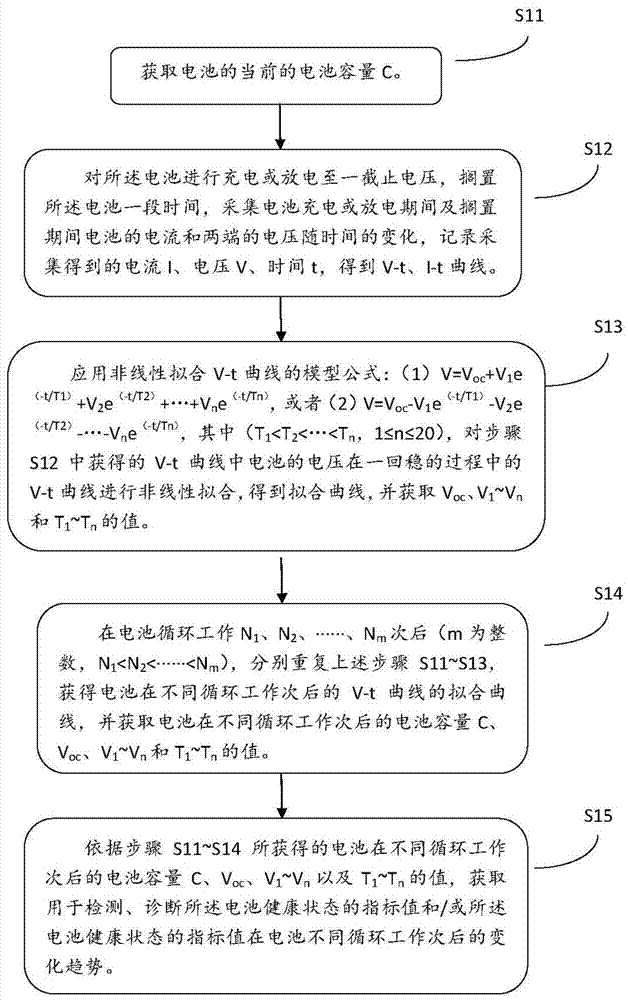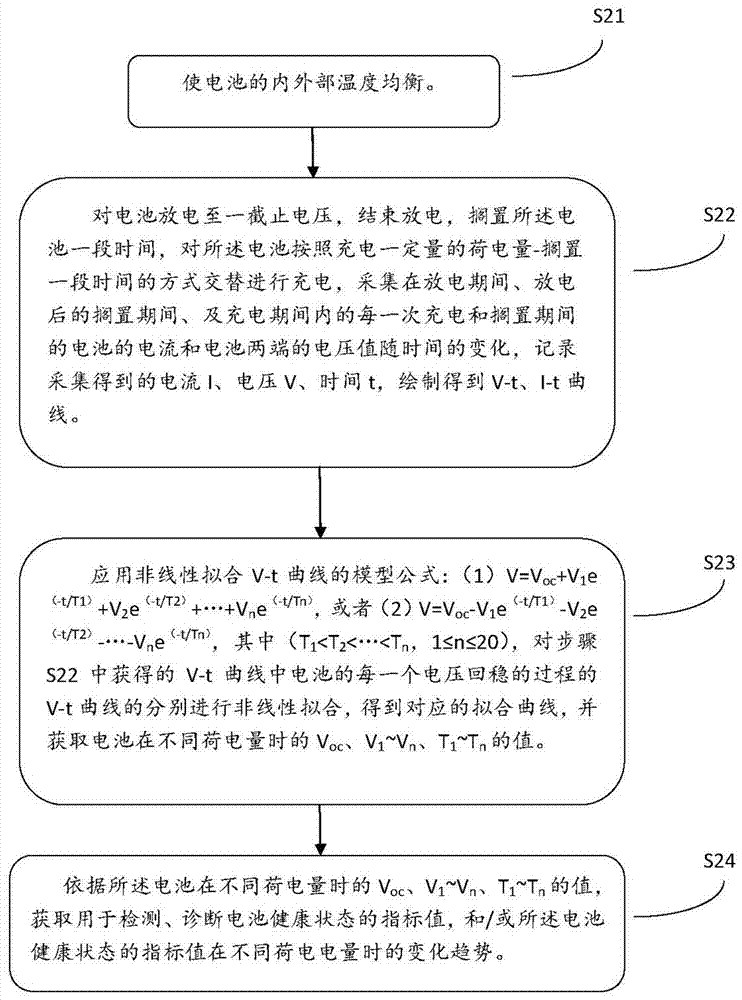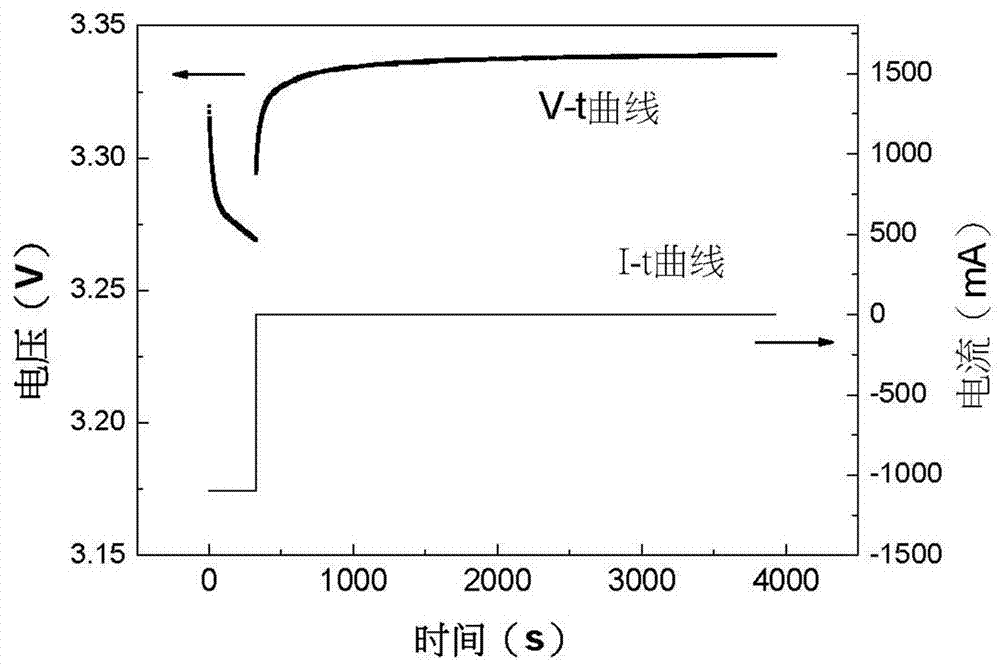Detection and diagnosis method of battery charging capacity and battery health status
A battery health status and detection method technology, applied in the direction of measuring electrical variables, measuring electricity, measuring devices, etc., can solve the problems of huge investment in time and labor costs, inability to perform fast, non-destructive testing, complex and time-consuming testing processes, etc.
- Summary
- Abstract
- Description
- Claims
- Application Information
AI Technical Summary
Problems solved by technology
Method used
Image
Examples
Embodiment 1
[0073] Please refer to Figure 3~6 .
[0074] This Example 1 provides a 18650 lithium iron phosphate / graphite power battery cell with a rated capacity of 1.1 Ah, and detects the battery's SOH. The charge-discharge cut-off voltage range of the battery is 2.5 to 3.65V. The working environment of the battery is a constant temperature environment of 45°C. The current state of the battery is: under the working state of cyclic charging and discharging with a nominal capacity of 1C current constant current and constant voltage charging-shelving-discharging with a nominal capacity of 1C current constant current, it has been cyclically charged and discharged 50 times.
[0075] Step 1: Test the battery capacity C, and then place the battery until the voltage at both ends returns to a stable value. Place the battery in an environment of 25°C, charge it to 3.65V at a constant current of nominal capacity 1C, and then discharge it to 2.5V at a constant current of nominal capacity 1C, and recor...
Embodiment 2
[0086] Please refer to Figure 8-12 .
[0087] Example 2 provides a soft-pack type lithium iron phosphate / graphite power battery cell with a rated capacity of 1.1 Ah, and detects the battery's SOH. The charge-discharge cut-off voltage range of the battery is 2.5 to 3.65V. The battery was stored for one month under the conditions of 25°C and 20% SOC.
[0088] Step 1: Place the battery in a constant temperature environment of 25°C ± 1°C for 3 hours to balance the internal and external temperatures of the battery.
[0089] Step 2: Under a constant temperature environment of 25°C±1°C, discharge the battery with a nominal capacity of 1C current and constant current, discharge to the end of the discharge when the voltage across the battery is 2.5V, put the battery aside for 90 minutes, and then use the nominal capacity The battery is charged with a constant current of 1C, and the battery is charged with 10% SOC and left for 90 minutes. Take every 0.5s or ΔV as 5mV as the sampling stand...
PUM
 Login to View More
Login to View More Abstract
Description
Claims
Application Information
 Login to View More
Login to View More - R&D
- Intellectual Property
- Life Sciences
- Materials
- Tech Scout
- Unparalleled Data Quality
- Higher Quality Content
- 60% Fewer Hallucinations
Browse by: Latest US Patents, China's latest patents, Technical Efficacy Thesaurus, Application Domain, Technology Topic, Popular Technical Reports.
© 2025 PatSnap. All rights reserved.Legal|Privacy policy|Modern Slavery Act Transparency Statement|Sitemap|About US| Contact US: help@patsnap.com



